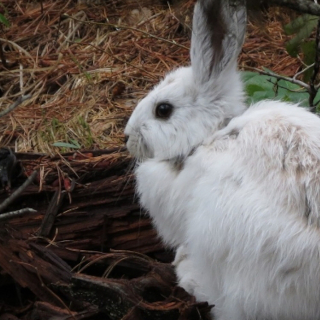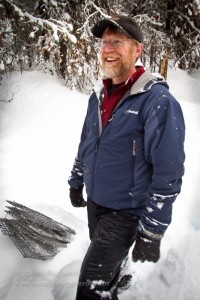Dr. L. Scott Mills
Associate Vice President of Research for Global Change and Sustainability
Professor of Wildlife Biology
University of Montana
Biographical sketch of Scott, authored by his then 16 year-old daughter, Linnea Rose Mills, for a class assignment (March 2018)
Education
Ph.D., Biology, University of California, Santa Cruz, CA (1993)
M.S., Wildlife Ecology, Utah State University, Logan, UT (1987)
B.S., Zoology, North Carolina State University, Raleigh, NC (1983)
Background
Dr. L. Scott Mills is Associate Vice President of Research for Global Change and Sustainability, and a Wildlife Biology Professor, at the University of Montana. From 2013 to 2016 he coordinated cross-cutting research initiatives in a focal initiative on Global Environmental Change and Human Well-Being as a Chancellor’s Faculty Excellence hire at North Carolina State University. Before that, from 1995 – 2013, he was a Professor in the Wildlife Biology Program at the University of Montana
In his current position as Associate Vice President of Research at University of Montana, Scott spends part of his time synergizing cross-cutting, interdisciplinary, international research projects related to global change and sustainability. The rest of his job focuses on conducting his research around the world and enjoying his international group of smart, dedicated, and competent students and research collaborators. Mills’ research program crosses scientific disciplines to apply ecological and evolutionary science to wildlife conservation; some highlights include integrating genetics and demography to understand persistence of wild species, developing new methods for non-invasive abundance estimation and monitoring of population trend, and many field studies to understand ecological and evolutionary responses of wild animals to human-caused global changes.
The two biggest current research projects in the Mills lab focus on: a) scope for adaptation by animals to global change, with an emphasis on animals that seasonally change coat color for camouflage against snow (we are studying hares and weasels globally, arctic fox in Sweden, etc.); b) charismatic big animals that cross international boundaries, particularly snow leopards, tigers and elephants in the Himalayan kingdom of Bhutan and northern India.
Mills has received numerous teaching awards, mentored 26 graduate and 34 undergraduate research projects, and been awarded funding from a wide range of sources; these include an NSF Early Career Award and a John Simon Guggenheim Fellowship. In addition to >100 journal and book articles, his applied population ecology textbook (1st and 2nd edition) has been used in at least 150 classrooms around the world. He has testified to the U.S. Congress on the role of non-invasive genetic sampling in endangered species science; advised the Western Governors Association on climate change effects on wildlife; served as member of the Board of Governors for the Society of Conservation Biology; and served as a coauthor on the North America section of the Nobel Prize winning 2007 Intergovernmental Panel on Climate Change (IPCC) report. His research has been widely covered by media outlets nationally and internationally.
Research Statement
As an applied wildlife population biologist, my research integrates field studies, molecular and population genetics, and quantitative modeling tools to understand how wild animal populations — and their associated communities and ecosystems — respond to human-caused global changes. I am also active in developing more efficient and rigorous approaches to population assessment, monitoring, and conservation decision-making. I often work in mountainous landscapes, including the Himalayan Kingdom of Bhutan where I advise Bhutanese graduate students studying snow leopards and tigers. I have a long-term research program on population dynamics of snowshoe hares, which has led to a recent focus on whether hare seasonal coat color change (from brown to winter white coats) can adapt to a decrease in snow under climate change. We are rapidly expanding this project on seasonal coat color and climate change to multiple other species around the world.
Teaching
At University of Montana (1995-2013)
Conservation of Wildlife Populations (WILD 470)
Applied Population Ecology (WILD 570)
General Ecology (BIOL 340/341)
Foundations of Wildlife Biology: Techniques and Core Concepts
Frontiers of Conservation Genetics
At NCSU (2013-2016)
Advanced Applied Population Ecology (FW 595)
Principles of Wildlife Science (FW 453)
Other Places
Conservation Biology (field course at Mountain Lake Biological Station, VA; Summers 2002, 2003)
Advanced Applied Population Ecology:
UC Santa Barbara (2016)
University of Porto (2012)
BOKU University, Vienna (2013)


